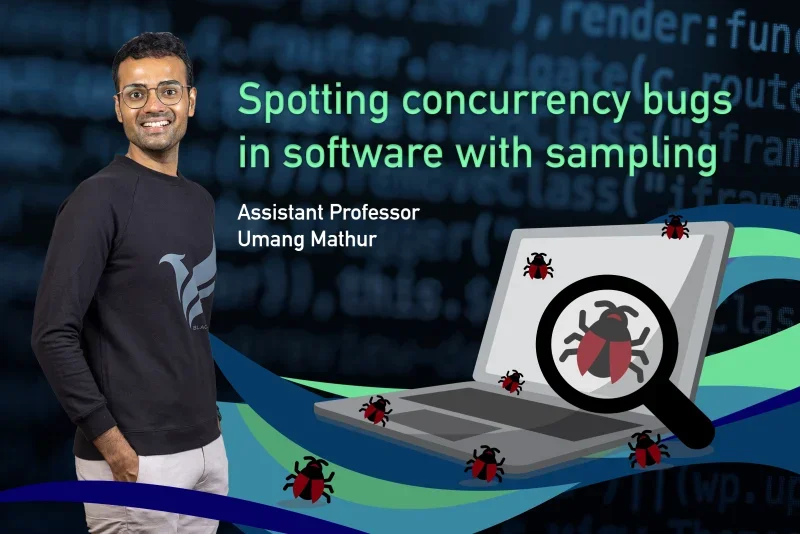In 2017, a casino in North America reported that their database had been hacked. The news in itself wasn’t surprising — more than 5,000 such breaches took place last year — but the cause of the leak was: a fish tank.
The casino had installed a high-tech aquarium that allowed its staff to monitor and adjust the tank’s temperature, salinity, and food levels remotely over the Internet. But ingenious hackers managed to compromise the system and subsequently obtained 10 gigabytes worth of information on the casino’s high-rollers.
Fish tanks like these are part of the Internet of Things (IoT) — a rapidly growing network of ‘smart’ devices that can connect wirelessly to the internet to collect and transmit data. From TVs to thermostats, Alexas and other digital assistants to devices that monitor air and soil quality or watch for tsunamis and earthquakes, IoT devices are estimated to grow to 50 billion in number by the year’s end.
Because of the expanding ubiquity of such devices and their ability to retain information, experts are increasingly concerned with how secure they are. One of the most dangerous types of hacks to IoT devices comes in the form of a Laser Fault Injection, where a hacker removes the top part of a silicon chip within the device, shoots a small laser beam onto it, and introduces an error into the processor.
“Once you do that, it sort of gives you the keys to the kingdom,” says Trevor E. Carlson, an assistant professor at NUS Computing who specialises in designing computer processors that are both programmable and flexible. Causing a fault on a chip allows an attacker to do many things: access confidential information stored on the device, feed false information to connected servers, induce neural networks to make inaccurate predictions, and so on.
“The thing about injection fault errors is that you can be very precise, which means you can really control what kind of information you change, what information you get, and how you manipulate things,” says Carlson. “It is a very powerful type of attack.”
An end-to-end solution
To guard against such attacks, chip designers make sure to test for them during the manufacturing process. It is a costly procedure because the equipment required to generate such laser faults are highly sophisticated and expensive. And it is time-consuming too as any vulnerabilities detected means having to go back to the drawing board to redesign the chip from scratch.
But there is a bigger problem with testing — it requires chips to first be fabricated. “By the time you build the hardware, it’s too late,” says Carlson. “You need to be able to put those testing mechanisms in beforehand.”
Recognising the problem, Carlson teamed up with fellow NUS Computing professor Li Shiuan Peh and PhD student Burin Amornpaisannon to find a solution. Their work is part of a special five-year research programme launched by Singapore’s National Research Foundation and supported by the Ministry of Education as well as leading industry partners. Aimed at designing safer silicon chips, the Assuring Hardware Security by Design in Systems on Chip (SOCure) programme has a budget of S$12 million in funding to date.
The pair’s proposed solution is called Laser fault Attack Benchmark Suite, or LABS for short. “It is the first end-to-end solution that allows designers to both evaluate and mitigate laser fault injections,” says Carlson.
“Without having to manufacture the chip, you want to make sure it’s secure. You don’t want to build your IoT device and then realise you’ve messed up,” he says.
“So we have created a system to detect and prevent faults that we hope will become part of the standard way you do hardware design,” says Carlson.
LABS works by first mimicking attacks onto the chip in a software simulation prior to fabrication, which allows designers to assess how vulnerable their chips are to hacking. LABS can simulate many common types of laser attacks — a feature that Carlson says was the most challenging part to create. “There are a number of key attacks and we wanted to make sure that we could simulate what a real hacker would do,” he says. “So a lot of time was spent understanding the state-of-art behind all these attacks.”

“To build mathematical models, you have to really understand how flipping this bit on a chip modifies an AI algorithm, how to recover private keys to gain access to the chip, how to confuse a neural network so that it’s mislabelling an intruder as an innocuous animal for example, and so on,” says Carlson.
The second part of LABS is the mitigation step, where it can automatically correct any faults detected. “Basically, the people who are designing these next-generation chips can run our tool and 20 seconds later get an optimised version of their design that would be tolerant to these kinds of laser fault injection attacks,” says Carlson.
Making it automatic was key for the team as “we wanted the average Joe hardware designer, who may not know a lot about laser fault injection attacks, to be able to come in and still use our infrastructure and figure out how to mitigate these attacks,” he says.
A tool for all
LABS offers many benefits: hardware architects can use it to evaluate their chip design without having to physically manufacture a chip, fault correction is automatic, and the entire process takes merely minutes.
Not only does LABS speed up chip building, it is also adaptable to the user’s needs. “It’s a modular approach — a user can start with the most common attacks and mitigations, or they can easily add new components and other attacks they’d like to test against,” says Carlson. Plus the entire thing is open-source too.
Today, the team continues to work on improving LABS. They are adding new attacks and more specific mitigation techniques, as well as exploring how its use can be extended beyond laser attacks, to those caused by electromagnetic pulses, voltage spikes, and high temperatures, among others.
One offering they are keen to add to LABS is a feedback component. “We can inform the processor that it’s been attacked, but how do you tell it to take proper countermeasures and recover after that?” asks Carlson. For example, you might instruct it to shut down or to randomise the private keys so as to fool the attacker into thinking everything is okay. “It’s about closing the detect-mitigate-response loop.”
The long term vision is for these tools to become more widely employed and to lower the barrier to entry so that anyone can build their own secure chip, says Carlson. “And if we can translate that into connecting with more of a community here and abroad, I think that would really help those who are working on these advanced techniques.”
































